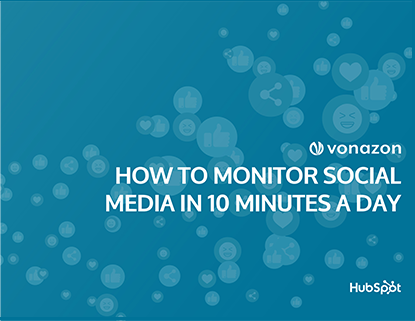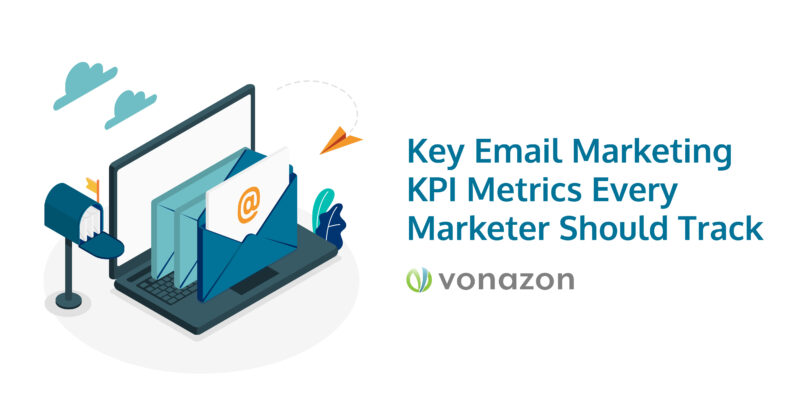Key Email Marketing KPI Metrics Every Marketer Should Track
Email marketing is a complex process where tracking every detail matters, and elements like email KPI metrics must be accurately recorded. So many moving pieces go into an online marketing campaign that it can be hard to know which email marketing KPIs to pay attention to and which metrics can be disregarded.
To help you create an effective email strategy, we’ve put together a simple, easy-to-follow guide detailing five key email marketing metrics every marketer should track to measure the success of a campaign.
5 Key email marketing KPI metrics to track and review:
Open Rate
These rates involve calculating the percentage of emails opened by your subscribers against the total number of emails sent. This rate is one of the most essential email KPI metrics to determine the sending strategy of your marketing campaign. Open rates allow you to track how your email content, subject lines, and brand presentation have resonated with your audience. A “good” email open rate will average between 15% to 30% engagement, although these rates will vary by industry.
Click-through Rate
Click-through rates (CTR) report the percentage of customers who viewed your emails and clicked a hyperlink. These links redirected them to paid advertisements, landing pages, and websites. These numbers also vary across industries, but the average “good” CTR is typically within 2-5% of all emails sent. An effective email campaign generally has one or more call-to-action (CTA). CTAs prompt your audience to perform a desired action by clicking on a button or hyperlink. CTRs are useful metrics for gauging which customers have taken a prolonged interest in your email content over time.
Bounce Rate
Bounce rates are the percentage of your subscriber list who did not receive promotional emails. Bounces occur when a message cannot be delivered to an email address or the recipient’s mail servers return them. In marketing, there are two types of bounces: “hard” and “soft.” Hard bounces happen when permanent reasons prevent emails from being sent, usually due to invalid or fake email addresses. Soft bounces result from temporary causes blocking emails, typically because of server issues or full inboxes. A “good” bounce rate for most industries should be less than 2% of every 100 emails sent; anything above that will require improvements. Generally, businesses want to avoid having a high bounce rate because it negatively impacts the brand.
Unsubscribe Rate
These email KPI metrics record the percentage of users choosing to opt out of your email campaign mail list. This number helps you to visualize which customers have lost interest in your brand and actively decided to remove themselves from your email content. A healthy unsubscribe rate for businesses falls within a range of 2.0-1.0%. Unsubscribe rates are a good indicator of when it is time to diversify your content, the design layout of your promotional advertisement links, and the frequency in which you send them to your subscriber lists. Too little and your campaign fails, but too much and it runs the risk of turning into spam.
Spam Complaint Rate
Few email KPI metrics can harm your marketing campaigns as much as spam complaint rates. Spam complaints happen when current or potential customers have committed time to mark your messages as spam through their email service provider (ESP). Once this has occurred, you cannot send additional notifications to your subscriber list. In the best case, your emails get redirected to the subscriber’s spam folder. While in the worst case, your entire email account will be suspended pending an ESP review to prevent your sender’s reputation from negatively impacting your brand. Marketing standards put an acceptable spam rate below 1%, and complaints past that amount risk damage to your email account. Content should be as personalized as possible and sent only to people who’ve opt-ed into your lists within 12 months.
Why are these metrics important?
These five email KPI metrics are vital to online marketing because they can either strengthen your brand or hurt it immensely if ignored. An email campaign isn’t as simple as sending out 1000 emails and expecting to see revenue accumulate. Open and click-through rates provide actual numbers to measure audience engagement and involvement in your promotional content. Bounce rates prevent you from wasting resources by ensuring emails reached your subscriber lists.
Unsubscribe rates and spam-compliant rates, while concerning, can be a good indicator of how your email marketing campaign is being received. If your emails are too repetitive, generic, or low-quality, users will label them as spam. When these two rates become too high, deliverability issues will prevent future contact with potential customers, and your email accounts may become banned.
How are these metrics used to improve your email marketing efforts?
These email KPI metrics improve your marketing by exposing the weak points in your content delivery and providing solutions for strengthening them. Open rates show which recipients took your content seriously and click-through rates allow you to segment those people into high-priority lists based on that interest.
Bounce rates help prevent damaging customer relationships by ensuring the company’s message actually reaches their inbox. Watching unsubscribe rates help you develop quality control practices, so your content isn’t considered invasive or annoying enough to be labeled irrelevant junk. Finally, monitoring spam complaint rates protects your campaign from adversely hurting the company’s reputation. It’s always best to offer a chance for those who want to opt-out to do so.
Conclusion
Vonazon believes there is a delicate balance between producing an effective or ineffective email marketing campaign. You want to see customers connect with your content instead of viewing it as a waste of space in their inboxes. That means recording metrics that can provide you with “real” levels of investment into your content and then making those interested parties your primary focus. After that, you can plan best practices to guarantee that the most engaging content is successfully delivered to those interested audiences. Adding a layer of quality control to reduce spam reports will ensure your audiences are receiving valuable content.

Want to improve your marketing ROI?
Grab your FREE copy of 6 Marketing Metrics Your Boss Cares About
WHAT’S IN THE GUIDE?
- 6 marketing metrics that prove the value of your marketing efforts
- Formulas and examples to help you calculate your own metrics
- Explanations and scenarios of why these metrics are important and how to interpret them
Download the guide and show the true value of your marketing.
Account Executive
Vonazon Inc.

Vonazon can guide you through the process of creating fun and effective short form videos that are unique to your brand. We can also help you create campaigns around your videos that deliver results, grow your brand’s social media presence, and produce more leads.
Contact us today to begin your short form video journey.








